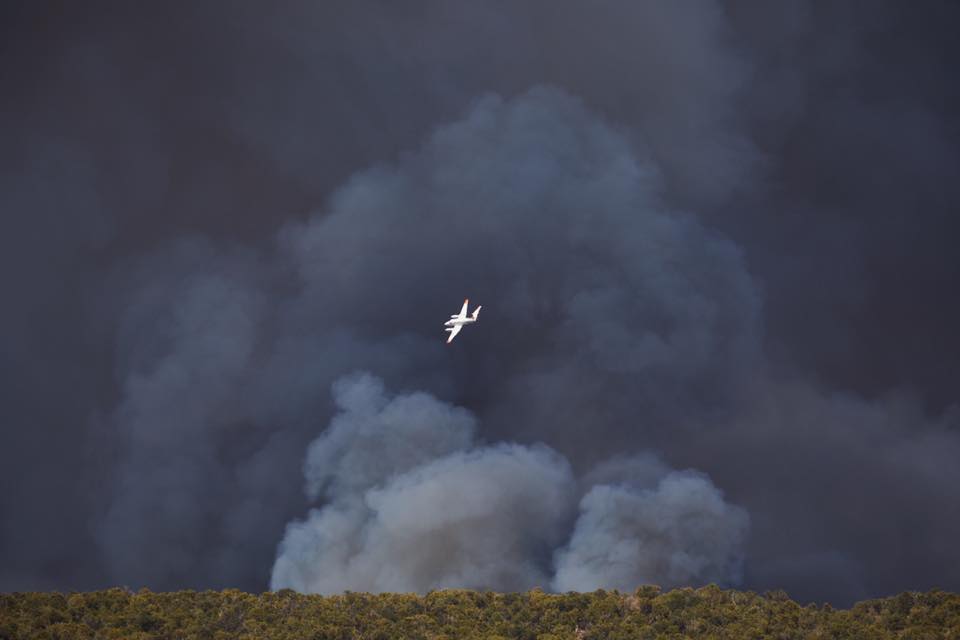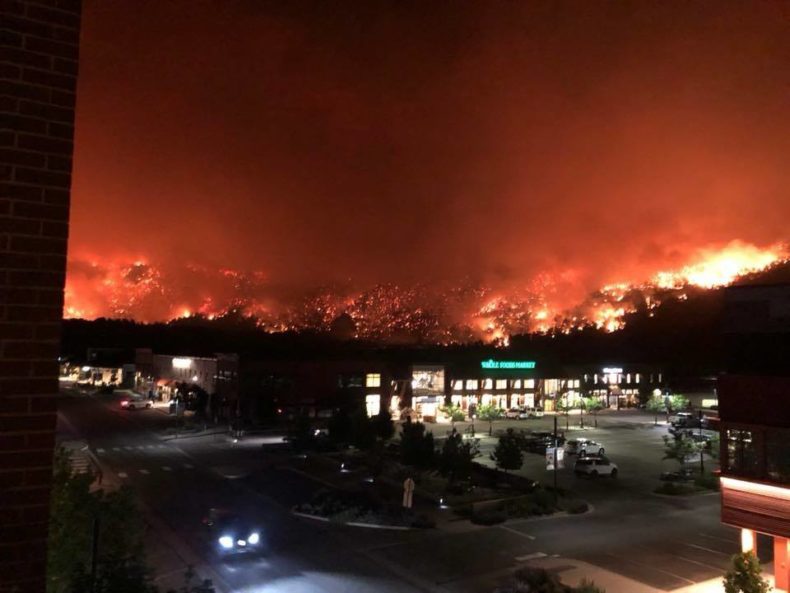 We’ve been living in a tinderbox, precipitation at an all-time low, summer temperatures unusually high, snowpack paltry. The ground feels as if it’ll ignite just from looking at it.
We’ve been living in a tinderbox, precipitation at an all-time low, summer temperatures unusually high, snowpack paltry. The ground feels as if it’ll ignite just from looking at it.
A few days ago a blaze started near Basalt, Colorado, a couple rivers east of where I live, forcing rapid evacuations. It started from tracer bullets at a shooting range that was suppose to be closed due to fire danger, and jumped to almost 5,000 acres overnight. Meanwhile, the Spring Fire on the other side of the Continental Divide has topped 100,000 acres, now the third largest fire in Colorado history, spreading at 16 acres a minute.
Some fires have been burning closer to me, close enough I think about my journals and photographs. One started by a lightning strike ten miles from where I live and topped out at 1,500 acres. Another fire five miles away (pictured above) blackened almost 500 acres, drawing slurry bombers and fire crews before rain accidentally put it out. As much as I fear these fires, there’s something undeniably alluring about them. At times, I feel like cheering them on.
Last week I took my kids to a mountain theme park in nearby Glenwood Springs, and the park was being evacuated, one helicopter with a nozzle and one with a swinging bucket taking turns putting out something burning behind a ridge. Apparently, some nimrod had dragged a couch into the woods, fell asleep on it with his cigarette burning, and started a fire. That’s how a blaze can start that goes for weeks, dreaded uncontainment, hundreds of homes lost, possibly the lives of firefighters. Helicopters were stamping out the spark like boots on smoking grass.
Most summers in the West you have to make peace with smoke from wildfires always burning somewhere, but this summer in Colorado is grandstanding. The other day driving into the mountains near where I live, I watched magnificent plumes of pyrocumulus clouds rise from a pair of converging fires pushing 57,000 acres in southwest Colorado near Durango.
Pyro: fire. Cumulus: clouds in a dramatic, heap-shaped formation like mashed potatoes. These are formed by pyroconvection, the vertical transport of heat and air driven by fire. A pyrocumulus is produced when atmospheric moisture pushes upward until it reaches a condensation level, forming a cumulus cloud. When that cloud hits the middle troposphere and destabilizes, building into an enormous anvil head, it is called a pyrocumulonimbus.
The sight was invigorating, like seeing the earth open its wide, horrible mouth over your head. Everything in me lifted with awe. I know, it’s awful. Beloved groves of old growth have been sacrificed to save houses. People I know are fleeing smoke, leaving their homes to the protection of wildland firefighters. Still, you stare, amazed. You want more, as if drought and flame have swept you up.
I’ve been in contact with two young parents who have a baby and had to get out of the Animas River Valley, where that giant plume has been rising. Life is momentarily upended, and they’ll come back to the charred remains of forests they used to know. The mother is a freelance writer and can take her work on the road (she’s written guest posts for LWON). She’s often commented on how fortunate she feels being able to leave. Another local couple, friends of hers, had a baby around the same time. The father is a nurse, he can’t leave, and they have to stay indoors. People have been congregating in the air conditioned library in town to breathe the air.
This summer is not once in a lifetime. I’ve been through a few like this. In 2002, I covered the Hayman Fire, which burned 137,760 acres southwest of Denver. It was a year that seemed like fires were springing from the ground on their own. A Colorado Congressman held an outdoor news conference at a Hayman command center, announcing that the state was still open for tourists. Flames were topping the ridge behind him as he spoke, helicopters landing and taking off around us. Air tankers roared overhead, dumping raspberry-colored retardant across the nearby blaze. The atmosphere was intoxicating, spruce and fir bursting into orange coils a hundred feet high. The next day, the command center was evacuated.

I went in with a crew defending houses at the Hayman Fire. It was a calmer day, most firefighters back-burning, lighting up patches of woods to act as defensible breaks. The crew I joined was protecting a split-level ranch house, owner gone, garden hoses unrolled so firefighters could run to them if need be. They beat on smoldering root balls and stumps with wedge-headed Pulaskis, and dug trenches around the house. One of the firefighters asked if I’d heard any news. He wanted to know if the fire had topped 100,000 acres yet. This one was for the record books, and he was excited to be in the middle of what was becoming the largest fire in the state’s history. As we talked, he absentmindedly reached across the shallow trench he’d dug and scooped up a shovel-full of burning pine duff. He dumped it on our side, burning a patch on the ground, its own little firebreak. Dry reddish pine needles curled into flame that spread until we had to step away from each other. Fallen branches began to take. He chopped his shovel blade into the ground and began a new trench to hold back what he’d started.
He was hungry for the fire. I don’t mean pyromania. This is more like pyrophilia. Technically, the word refers to sexual arousal from starting fires, which isn’t necessarily what I’m talking about. I’m thinking more the root root of the word. Pyro: fire. Philia: extraordinary fondness or abnormal love. How can you not be gratified by this element? How can you look away? If you are going to make peace with fire, it might as well be love.
Top photo: Jim Hurst, Horse Park Fire, Colorado, about 12 miles from my house.
Lower photo: Kate Baum Hueth, Lake Christine Fire near Basalt, Colorado.
We live in Arizona now, but it is hard to watch our home of 40 years go up in smoke. Another eloquent article, Craig. Not sure I’ll ever make peace with fire..always had our camper stocked with food and water, bedding for whichever child or grandchild was staying with us. Been evacuated more than once. Stay safe out there, firefighters and old neighbors.
You wrote once you wanted “to see what the end of the world looked like long after the smoke has cleared.”
You may want to invest in some fireproof boxes for your journals. Be safe. Don’t let your pyrophilia progress to what Gaston Bachelard calls the Empedocles Complex; the “call of the funeral pyre, where destruction is more than a change it is renewal.”
I read that Colorado did not have fireworks. These home grown fireworks look more impressive. Incidentally, I really enjoy your writings which contributed to my decision to visit Chaco Canyon some time soon (the writings of Stephen Lesson also contributed to that decision).
Ann is my sister.
Hi Gail, we’re family then! Instead of fireworks we sent kids up on the roof with rubber bands and LED lights. They shot them into the sky and we raved from below. Glad to have helped you down to Chaco.
Next month I am leaving my home of 40 years, Flagstaff, to finally live all-in in my house on the Dolores River, 5 short miles from the current Burro Fire. Jumping from the firepan into the flame, so to speak. I am not sure why Flagstaff hasn’t burned yet – I look out my front window on a forest drier than the lumber sold at Home Depot, they say, and I keep thinking in 90 degree heat that it’s going to spontaneously combust. The City is flying infrared sensing planes at night to spot any tiki torches, BBQs, kids toking. I man a firetower here and spot chains of fires along the highways caused by chains dragging on asphalt. Dante didn’t write about this level, I don’t think.
“It doesn’t mean shit to a tree.” All our gorgeous verbiage doesn’t mean shit to a horned toad or a rabbit or a ground squirrel who can’t outrun the agony of burning alive.
This is awesome, Craig. Thanks for your insightful descriptions of what has been consuming southwestern Colorado for the last 7 weeks!